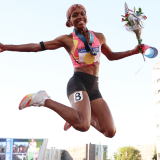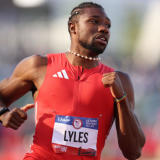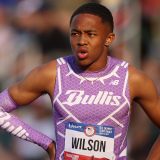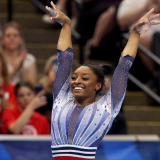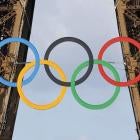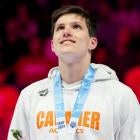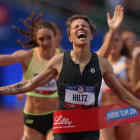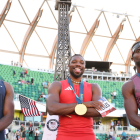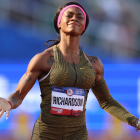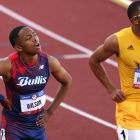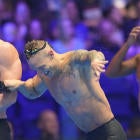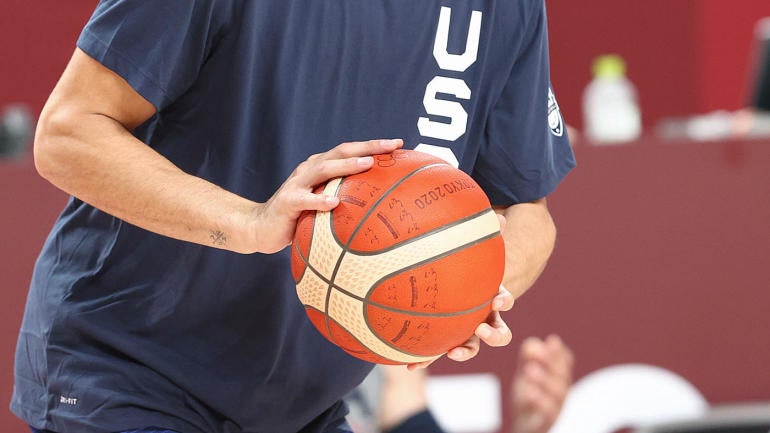
I preface everything I'm about to say with an admission: I am obsessed with the different feel of different basketballs. When Lonzo Ball's college stats revealed a decidedly different shooting percentage from one type of ball to another, some people dismissed the finding as random or the product of a relatively small sample size. Not me.
After all, there's a reason that Tom Brady (allegedly) deflated his footballs and MLB pitchers are peeved over the banning of sticky stuff. The importance of how a ball feels in the hand of an athlete cannot be overstated. This is the instrument of their genius. If a world-class golfer started swinging with a heavier -- or lighter -- driver than he or she was used to, we would all, I hope, accept that a significant adjustment, whether mechanical or mental or both, would be required for said golfer to rediscover his or her normal feel. And as with all adjustments, some are going to make them better, and at different rates, than others. Consistency will be tough to come by.
Which brings me to the Olympics, and the FIBA basketball, which is markedly different than the NBA ball to which Team USA players are accustomed. Could this be a factor in Team USA's shooting struggles in both exhibition and Olympic play thus far? Absolutely. It seems impossible that it wouldn't have at least some kind of effect, frankly.
It's not the only factor, and it's probably not the biggest. The way the international games are officiated -- allowing more defensive contact -- and the pressure of the Olympic stage can certainly throw a shooter off. There's also a standard variance with shooters. They have bad nights, sometimes all at once, as happened against France when the Americans shot just 36 percent from the field and 31 percent from 3.
But don't dismiss an unfamiliar ball as at least a part of the shooting equation. The FIBA ball is the same size as an NBA ball (29.5-inch circumference), but some will swear to you it feels smaller and lighter. It has more seams and those seams are closer together, which is central to shooters, who typically try to align their fingertips with a seam whenever possible and are used to being able to locate those seams in the dark. An NBA ball has a harder, almost rocky feel and is known to become stickier as it gets wetter with sweat, but the FIBA ball is often described as spongy and more slippery, as Deron Williams told the Star-Ledger back in 2012.

CBS Sports HQ Newsletter
Your Ultimate Guide to Every Day in Sports
We bring sports news that matters to your inbox, to help you stay informed and get a winning edge.
Thanks for signing up!
Keep an eye on your inbox.
Sorry!
There was an error processing your subscription.
"It's a HUGE deal," former NBA player Raja Bell said of the international ball in a text with CBS Sports on Tuesday. "I've always said that FIBA balls affected my shot and other NBA players' shots tremendously. I HATE that ball!
"It's lighter, feels smaller, different texture," Bell continued. "I mean, when the art of shooting is based on muscle memory, and you change all the factors except the rim size and height, it's going to be difficult."
In another exchange with a Western Conference scout, the conclusion was similar.
"[The ball is] definitely a factor," the scout said. "How big a factor I guess depends on the particular player. But it's an adjustment for everyone. Some guys are going to make [the adjustment] easier than others."
And another text from an Eastern Conference scout with international playing experience: "It's pretty different, and it takes some getting used to. It's much softer than NBA or college basketballs."
Not everyone agrees with this. In 2019, Brooklyn Nets sharpshooter Joe Harris told The Athletic that he "wouldn't put anything on the ball" in terms of whatever shooting variance might show up in international play.
"If I had to guess, you could probably go around to every guy on the team and ask them about what the ball feels like in the game, and nobody would make a comment about it being that different, because you're not really thinking about it or noticing it," Harris speculated.
That's easy for Harris to say. He shot 50 percent on 3.3 3-point attempts per game at the 2019 FIBA World Cup, where the U.S. finished seventh. Kemba Walker shot 38 percent from 3. Donovan Mitchell shot 40 percent. His poor showing vs. France notwithstanding, Kevin Durant has traditionally shot the hell out of the FIBA ball over his Olympic career: At the 2016 Games, he shot 58 percent on over five 3-point attempts per game, backing up the 52 percent he shot at the 2012 Olympics. Damian Lillard has shot 42 percent from beyond the arc (19 for 45) in the Americans' five exhibition and Olympic games this summer.
But there are others, like Stephen Curry, who shot just 40 percent from the field at the 2014 World Cup, who have never really felt like themselves firing a FIBA ball. Klay Thompson shot 32 percent from 3 at the 2016 Olympics. Paul George shot 28 percent. Kyle Lowry shot 27 percent. Jayson Tatum shot 25 percent at the 2019 World Cup, and he's just 3 for 18 from 3 with Team USA this year.
Again, it varies player to player, and to reiterate, the ball is certainly not the only factor here. The international rims are thought to be less forgiving. Perhaps most importantly, the Americans are still getting used to playing with one another. Nobody has looked all that comfortable in terms of when and where to shoot, and even a split second of indecision can have a big impact on results. Variance is part of the deal. The U.S. could shoot the lights out for the rest of the tournament. That won't mean the ball wasn't a factor all along. It will just mean an adjustment was made.


